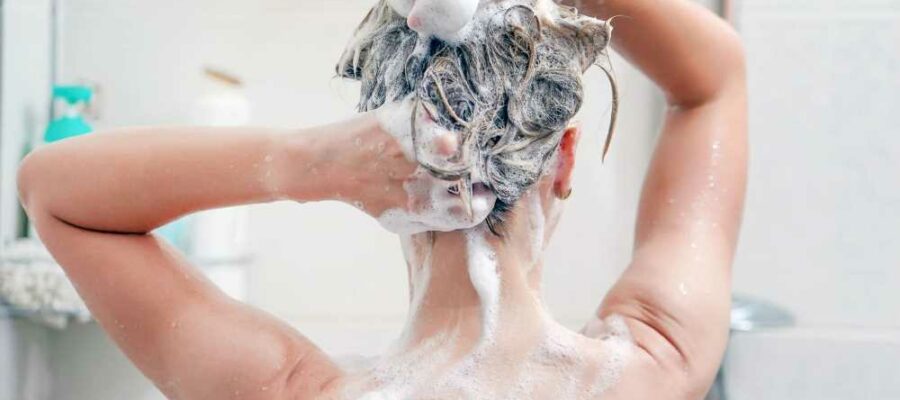EMERGING fresh and clean from the shower can be one of the most satisfying feelings.
Except you might not be as squeaky clean as you thought.
A dermatologist has revealed three key parts of our bodies that may be an afterthought for many of us when it comes to our shower routine.
But she warned that neglecting these spots could lead to flaky skin and a buildup of grime and bacteria, which in some cases could result in serious infections.
Dermatologist Lindsey Zubritsky – known as Dermguru on social media – took to TikTok to discuss the places "you're definitely not washing enough".
"You absolutely need to be washing these places more than you are," she stated.
Read more on skin

I'm a dermatologist – 5 simple steps to glowing skin (and cheap product swaps)

I’m a dermatologist – 2 cheap swaps you can use to keep your skin looking young
1. Behind your ears
First up, Lindsey reckoned you're definitely not scrubbing behind your ears enough.
She said that if you rub a finger behind one "and you notice an odour to it or feel you something, you should be washing it more."
It's also "super common" to get flaking, buildup and dandruff behind your ears, the dermatologist went on.
Moral of the story: spend a little extra time cleaning behind them next time you're in the shower.
Most read in Health

Stark warning as cases of infectious disease surge putting 1 in 10 kids in danger

My daughter, 22, died suddenly after her partner found her unconscious in doorway

From heartburn to cancer – the truth about tickly throats & when to worry

The immune-boosting supplements to take to keep bugs & silent killers at bay
2. In your tummy button
Another often forgotten spot is your belly button, Lindsey went on.
"This is a super common area to collect sweat, debris, dirt buildup," she explained.
"In fact, if you're not cleaning it enough, you'll have so much debris and dirt in there that you'll develop a navel stone that looks like this," Lindsay said, showing a picture of a tummy button that bore a distinct resemblance to a raisin.
Also known as an omphalolith, this is a hard, stone-like object that forms inside your tummy button after dirt, oil hair and dead skin cells get trapped there.
According to WebMD, the stone is usually dark coloured and firm to the touch and might resemble a large blackhead.
Sometimes a stone might be forming without your knowledge if you're not cleaning your belly button regularly and thoroughly.
3. Under your nails
"Finally, you're definitely not cleaning your fingernails enough," Lindsey said.
"When you're showering, you really need to get under those nails with a scrub brush to get rid of the dirt, debris, and build up."
A surprising amount of grime can accumulate under your nails throughout the day, so it's important you remove it.
Healthline also recommends using dish soap to get rid of the oils under there, as well as a soft wash cloth or a cuticle stick.
Use lukewarm instead of hot or cold water, it added, as it's less likely to dry the skin of your hands.
Linsdey warned that the three areas she flagged common areas to harbour methicillin-resistant Staphylococcus aureus (MRSA).
Accoridng to the NHS this is a type of bacteria that usually lives harmlessly on the skin.
"But if it gets inside the body, it can cause a serious infection that needs immediate treatment with antibiotics," it said.
If you get an MRSA infection under your skin, you may have an area of skin that:
- Is painful and swollen
- Feels warm when you touch it
- Leaks pus or liquid
- Looks red – though this may be harder to see on brown or black skin
Read More on The Sun

How to take 55 days' holiday in 2024 by booking just 25 days of annual leave

Mark Wright and Michelle Keegan home-shamed as they reveal decor at mansion
Lindsey revealed what such an infection could look like, showing a picture of inflamed red spots.
She said: "If you keep getting bacterial infections on the skin, you could be a coloniser of MRSA in those areas."
Source: Read Full Article



